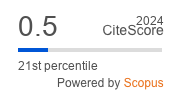Fate of doctors and nazism
摘要
This article discusses the importance of competence building in managerial health care staff, and the development of appropriate competence building models (competence profiles). The authors did expert interviews of 16 professors of the organizational departments at Razumovsky Saratov State Medical University. We determined importance of the competencies presented in the State educational standard for «Health care organization and public health» programs for the department heads; deputy heads (vice-head) and head physicians (chiefs) of medical organizations, as well as what future graduates need «to know», «be able to» and «to have», i.e. formulated appropriate competence building models. These models can be used both to develop training programs and healthcare personnel policy.
关于作者
I. Damulin俄罗斯联邦
R. Shurupova
俄罗斯联邦
A. Strutsenko
俄罗斯联邦
参考
1. Zeidman L.A. Neuroscience in Nazi Europe Part II: Resistance against the Third Reich. Can. J. of Neurol. Sci. 2011; 38: 826–838.
2. Kater M.H. Some ramifications of good and evil medicine in Nazi Germany and beyond. Can. J. of Neurol. Sci. 2011; 38: 808–809.
3. Zeidman L.A. Neuroscience in Nazi Europe Part I: Eugenics, human experimentation, and mass murder. Can. J. Neurol. Sci. 2011; 38: 696–703.
4. Kondziella D. Thirty neurological eponyms associated with the Nazi Era. Eur. Neurol. 2009; 62: 56–64.
5. Strous R.D., Edelman M.C. Eponyms and the Nazi era: time to remember and time for change. Israel Med. Association J. 2007; 9: 207–214.
6. Urbano F.L. Tinel’s sign and Phalen’s maneuver: Physical signs of carpal Tunnel syndrome. Hospital Physician. 2000; July: 39–44.
7. Pross C. Breaking through the postwar coverup of Nazi doctors in Germany. J. Med. Ethics. 1991; 17 (Suppl.): 13–16.
8. Colaianni A. A long shadow: Nazi doctors, moral vulnerability and contemporary medical culture. J. Med. Ethics. 2012; 38: 435–438.
9. Pearce J.M.S. Neurodegeneration with brain iron accumulation: a cautionary tale. Eur. Neurol. 2006; 56: 66–68.
10. Shevell M. Hallervorden and History. New Engl. J. Med. 2003; 348: 3–4.
11. De Stefano N.,Dotti M.T.,Mortilla M., Federico A. Magnetic resonance imaging and spectroscopic changes in brains of patients with cerebrotendinousxanthomatosis. Brain. 2001; 124 (1): 121–131.
12. Dotti M.T., Lutjohann D., von Bergmann K., Federico A. Normalisation of serum cholestanol concentration in a patient with cerebrotendinousxanthomatosis by combined treatment with chenodeoxycholic acid, simvastatin and LDH apheresis. Neurol. Sci. 2004; 25: 185–191.
13. Moghadasian M.H., Salen G., Frohlich J.J., Scudamore C.H. Cerebrotendinousxanthomatosis. A rare disease with diverse manifestations. Arch. Neurol. 2002; 59: 527–529.
14. Verrips A., Hoefsloot L.H.,Steenbergen G.C.H., Theelen J.P., Wevers R.A., Gabreels F.J.M., van Engelen B.G., van den Heuvel L.P. Clinical and molecular genetic characteristics of patients with cerebrotendinousxanthomatosis. Brain. 2000; 123 (5): 908–919.






































